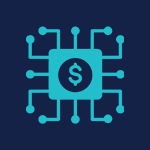
How to Modernize Legacy Banking Systems for Future-Readiness
The banking industry is experiencing an unprecedented digital transformation driven by evolving customer expectations, technological advancements, and regulatory pressures. Banks, some of which have relied on decades-old systems, face a monumental challenge: modernizing legacy systems to stay competitive, compliant, and future-ready.
Legacy banking systems, once reliable, can no longer meet the demands of a rapidly evolving digital economy. With the rise of mobile banking, fintech innovations, open banking initiatives, and increasing cybersecurity threats, banks must overhaul their infrastructure to ensure agility, scalability, and security.
In this comprehensive article, we’ll explore the steps banks can take to modernize their legacy systems, the challenges they will face, the technologies they should consider, and how these changes can help them become future-ready. We’ll also dive into real-world examples of successfully modernized banks and discuss best practices to ensure smooth transitions.
Introduction
In today’s banking world, innovation is no longer a luxury; it’s a necessity. The rapid growth of digital banking, driven by customer demand for convenience, speed, and seamless experiences, has put traditional banks on the back foot. Many of these banks rely on legacy systems—aging infrastructure built decades ago to support the operational needs of the time.
While these systems have served banks well, their limitations are becoming evident in an era where real-time transactions, mobile-first interactions, and data-driven personalization are the norm. Banks’ challenge is clear: they must modernize their legacy systems to become agile, future-ready institutions.
Modernizing a legacy system doesn’t just mean replacing old hardware or software—it involves rethinking the entire banking architecture to align with today’s demands. Banks must adopt cutting-edge technologies such as cloud computing, AI, blockchain, and APIs to stay relevant in the hyper-competitive financial landscape.
 The Problem with Legacy Banking Systems
The Problem with Legacy Banking Systems
Legacy banking systems, often based on mainframe computers, COBOL programming, and monolithic architectures, have significant drawbacks that hinder banks’ ability to scale and innovate:
1. Aging Technology
Most legacy systems were designed decades ago and are built on outdated programming languages like COBOL or Fortran. These languages are no longer widely taught, making it easier for banks to find the necessary talent to maintain and update them. Furthermore, these systems were designed for batch processing, not the real-time interactions that modern banking requires.
2. Lack of Flexibility
Legacy systems are often highly customized and rigid, making modifying or integrating them with modern technologies challenging. As a result, banks need help to roll out new products or services quickly. This rigidity also hampers the adoption of open banking practices, which rely on seamless API integrations with third-party providers.
3. High Operational Costs
As technology evolves, the cost of maintaining and upgrading legacy systems rises. Not only are specialized engineers needed to keep the systems running, but they are often inefficient in energy consumption, data processing, and storage. Moreover, frequent patches and workarounds are required to address modern security threats, further driving up costs.
4. Limited Customer Experience Capabilities
Legacy systems were never designed with today’s digital-first customers in mind. With slow processing times and limited data access, these systems prevent banks from offering personalized services, real-time insights, or seamless mobile experiences. Today’s customers expect instantaneous access to their financial data and tailored banking products, which legacy systems cannot deliver.
5. Compliance and Security Challenges
Legacy systems present a significant compliance risk with evolving regulatory frameworks such as PSD2 (Second Payment Services Directive), GDPR (General Data Protection Regulation), and increasing cybersecurity threats. These systems often lack the built-in capabilities to support real-time fraud detection, modern encryption techniques, or data privacy regulations, leaving banks vulnerable to breaches and fines.
 Why Modernization is Critical for Future Readiness
Why Modernization is Critical for Future Readiness
To thrive in the future, banks must address the shortcomings of their legacy systems. Modernization is not just a technological upgrade; it’s a strategic transformation that allows banks to:
1. Stay Competitive
Fintech startups and digital-only banks rapidly gain market share by offering innovative solutions and superior customer experiences. Traditional banks that fail to modernize will lose ground as these competitors provide more agile and scalable solutions that attract younger, tech-savvy customers.
2. Improve Operational Efficiency
Legacy systems are often slow and require significant manual intervention. By moving to modern, automated processes, banks can dramatically reduce operational costs, eliminate inefficiencies, and free up resources to focus on customer service and innovation.
3. Enhance Security and Compliance
Newer systems are designed with advanced security features and can be easily updated to comply with changing regulatory requirements. Modern systems offer better data encryption, fraud detection, and customer authentication capabilities, helping banks avoid cyber threats.
4. Enable Real-Time Decision Making
With access to real-time data through modern systems, banks can provide better insights, make faster decisions, and offer more personalized services to customers. Legacy systems typically rely on batch processing, leading to delayed information and less accurate forecasting.
5. Facilitate Scalability and Agility
A modernized banking system allows institutions to scale their operations quickly, respond to market changes, and introduce new services or products without significant disruptions. Scalability is essential as the volume of digital transactions continues to grow exponentially.
 Critical Challenges in Modernizing Legacy Systems
Critical Challenges in Modernizing Legacy Systems
While the benefits of modernizing legacy systems are clear, the journey itself can be fraught with challenges:
1. Significant Upfront Investment
Modernization requires a substantial initial financial outlay. It includes the cost of new technology, training staff, integrating new systems with existing ones, and mitigating potential disruptions to service during the transition.
2. Complex Integration
Banks often have multiple systems that serve different functions. Integrating modern technologies with these legacy systems or replacing them can be complex and time-consuming. Banks must ensure that the transition does not disrupt their core services or negatively impact the customer experience.
3. Risk of Downtime
As legacy systems are phased out, there is always a risk of downtime, which can lead to operational disruptions and customer dissatisfaction. Banks must carefully plan the transition to minimize any negative impact on their day-to-day operations.
4. Internal Resistance
Employees who have spent years working with legacy systems may be resistant to change. This resistance can slow down the modernization process and make it harder to implement new systems successfully. Additionally, the learning curve for new technology can be steep, requiring extensive training and support.
 Strategies for Modernizing Legacy Banking Systems
Strategies for Modernizing Legacy Banking Systems
Modernizing a legacy banking system requires a well-thought-out strategy that balances innovation with operational stability. Below are some of the key strategies banks should consider:
1. Cloud Adoption and Infrastructure Modernization
Cloud computing is one of the most transformative technologies in the banking industry. By shifting legacy systems to the cloud, banks can reduce their reliance on expensive, on-premise hardware and gain access to scalable, flexible infrastructure.
Key Benefits:
Implementation Strategy:
2. API Integration and Open Banking
API (Application Programming Interface) integration is essential for enabling open banking, which allows third-party developers to build applications and services around a bank’s core financial infrastructure.
Key Benefits:
Implementation Strategy:
3. Microservices Architecture
Microservices architecture breaks down banking applications into more minor, independent services that can be deployed and scaled separately. It contrasts with the monolithic architectures common in legacy systems, where all functions are tightly coupled.
Key Benefits:
Implementation Strategy:
To explore how to transform your bank’s legacy systems, get in touch with us.
4. Blockchain and Distributed Ledger Technologies (DLTs)
Blockchain and distributed ledger technologies have the potential to revolutionize banking by offering more secure, transparent, and efficient transaction processing.
Key Benefits:
Implementation Strategy:
5. AI and Machine Learning
Artificial intelligence (AI) and machine learning (ML) transform how banks interact with customers, detect fraud, and manage risk.
Key Benefits:
Implementation Strategy:
 Steps for a Successful Modernization Strategy
Steps for a Successful Modernization Strategy
Modernizing legacy systems is a complex process that requires careful planning and execution. Here are the key steps banks should follow to ensure a successful transition:
1. Assess the Current Infrastructure
Banks must thoroughly audit their current systems to identify which components are outdated, which can be modernized, and which should be replaced. This assessment should include hardware and software components and an evaluation of current workflows.
2. Define Modernization Goals
Before embarking on a modernization journey, banks need to define clear, measurable goals. These goals can include reducing operational costs, improving customer experience, increasing security, or ensuring regulatory compliance. Banks can align their modernization strategy with business outcomes by having clear objectives.
3. Develop a Roadmap
A well-structured roadmap is critical for guiding the modernization process. Banks should outline which systems will be updated, in what order, and what resources will be required. A phased approach is often the most effective way to minimize disruption while achieving modernization goals.
4. Partner with Experts
Banks should partner with technology experts and vendors with experience modernizing legacy systems. External partners can provide valuable guidance on the latest technologies, integration strategies, and best practices, ensuring a smoother transition.
For over 25 years, Datavision has developed top-tier software solutions for the banking and financial sector. Our comprehensive product suite covers core banking, channels, compliance, microfinance, transaction banking, and payments. DataVision’s applications optimize operations, enable real-time customer connectivity across channels, and adapt swiftly to evolving industry needs.
5. Train Employees
Employee buy-in is crucial for the success of any modernization effort. Banks should invest in training programs to help their staff adapt to new technologies and workflows. This will not only improve operational efficiency but also reduce resistance to change.
6. Monitor and Adjust
Modernization is an ongoing process. Banks should continually monitor the performance of their new systems and make adjustments as needed. Regular updates and enhancements will be necessary to keep pace with technological advances and changing customer expectations.
 Best Practices for Legacy System Modernization
Best Practices for Legacy System Modernization
1. Start Small, Then Scale
Banks should begin the modernization process with small, non-critical systems before moving on to core banking functions. It allows them to gain valuable experience, test new technologies, and minimize the risk of operational disruptions.
2. Prioritize Customer Experience
Ultimately, the goal of modernization should be to improve the customer experience. Banks should focus on technologies and strategies that enable them to deliver faster, more personalized services while ensuring data security and privacy.
3. Invest in Security from the Outset
Modernization offers an opportunity to upgrade security measures. Banks should implement robust security protocols, such as multi-factor authentication, real-time fraud detection, and advanced encryption, to protect customer data and ensure regulatory compliance.
4. Collaborate Across Departments
Modernization should not be viewed as a solely technical initiative. Banks should involve stakeholders from all departments—IT, operations, compliance, customer service, and marketing—to ensure the new systems align with the bank’s overall business objectives.
5. Embrace a Continuous Improvement Mindset
Technology is constantly evolving, and so should banks. Legacy system modernization should not be seen as a one-time project but as an ongoing process that requires regular updates, enhancements, and evaluations.
Conclusion: Embracing the Future of Banking
Modernizing legacy banking systems is not just a technological upgrade—it’s a strategic imperative for banks looking to thrive in the digital age. The process is complex and challenging, but with the right strategy, banks can overcome the limitations of their legacy systems and position themselves as leaders in the future of finance.
By adopting modern technologies such as cloud computing, APIs, microservices, blockchain, and AI, banks can offer better customer experiences, improve operational efficiency, enhance security, and stay competitive in a rapidly evolving market.
Ultimately, the banks that successfully modernize will not only survive but thrive, becoming the future-ready institutions that customers trust for their financial needs.
How Can Datavision help?
We assist various financial institutions and global banks on their digital transformation journey. Our one-of-a-kind approach, which combines people, process, and technology, expedites the delivery of superior results to our clients and drives excellence. Several reputed companies leverage our proprietary suite of business excellence tools and services to unlock new growth levers and unparalleled ROI.
Datavision stands proudly as a prominent banking software solutions provider, recognized for our unwavering commitment to excellence in the industry. We have earned our esteemed reputation by consistently delivering cutting-edge core banking software, catering to the needs of both retail and corporate banking software sectors. At Datavision, our mission is clear: to provide our clients with the best banking software products, ensuring that they stay ahead in an ever-evolving financial landscape. We take pride in serving our prestigious clients and look forward to continuing our journey of innovation and excellence.
Our portfolio of banking software product and services include:
Core Banking Solutions: | FinNext Core | Banking: | FinTrade | EasyLoan | MicroFin |
Digital Banking Solutions: | IBanc | MobiBanc | MBranch | FinTab | FinSight |
Risk & Compliance: |FinTrust |
Want to know how our team of experts at Datavision provides customizable, scalable, and cost-effective banking software products and solutions to our esteemed clients? Visit us for more information.